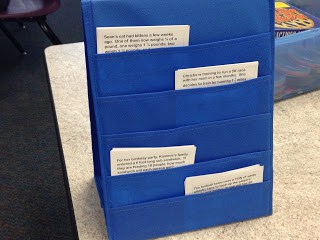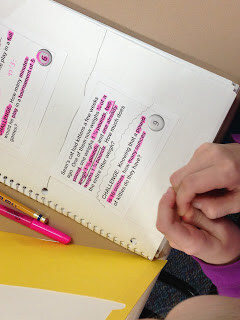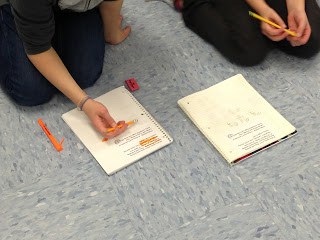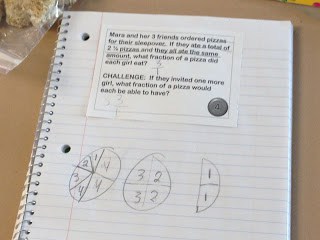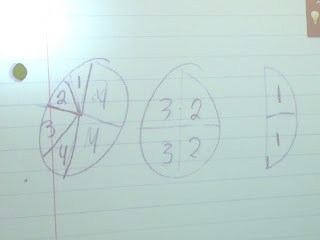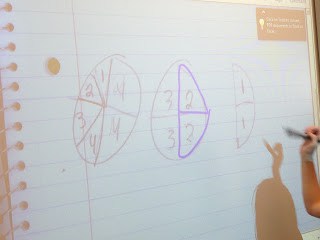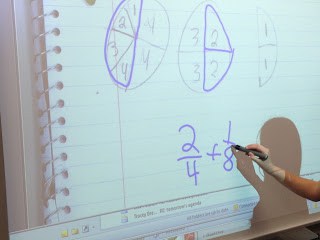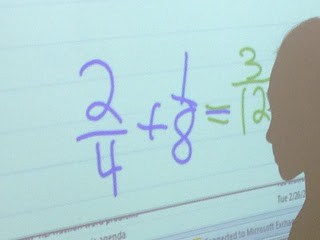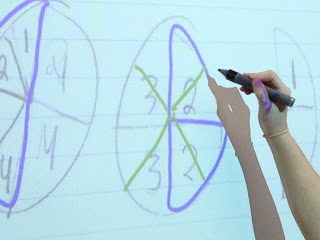Well . . . I promised a little update on the problem solving from the other day, so here goes!
What I often do toward the end of a unit is provide students with a class period or two to work collaboratively or on their own on an assortment of word problems. Some of the problems are right at the level I would expect them to be able to do and others “push” and help them work on their “problem attack” and perseverance. While they work, I can circulate and coach as they get started–but then my real goal is to be able to pull small groups and individuals to work on “issues” that have come up in recent lessons.
During this round of problem solving, I wanted to pull students who are still “iffy” on equivalent fractions, on comparing fractions, and on addition/subtraction with like denominators, so I got my collection of problems ready so the students would be focused while I pulled groups.
Here is one way I organize the problems:
This is a little cheap “tent” pocket chart that I think I got a few years ago at “The Bullseye Store” It has those pockets on both sides.
So . . . on each of my two problem solving days, I did a 15 minute review minilesson to keep cycling back through those concepts covered over the last weeks and then I sent my students off to work in their math notebooks on the variety of problems. I DO give a little “problem talk” about the problems (8 choices this time) so the students know who the problem is about (often students in the class) and what is happening. In this collection there was a friendship bracelet problem (I KNEW which 3 girls would make a beeline for that one), a “travel team” soccer problem, a kitten problem, a candy store problem, a “Training for a 5K” problem . . . you get the picture. Students often gravitate toward problems with topics that interest them no matter what the math content is! I will also give a warning if I think the problem is particularly challenging or one that I call a good “warm up” which is the sign to those who are hesitant to TRY THAT ONE FIRST!
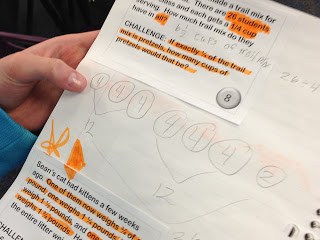 |
| Drawing pictures to solve the problem . . . notice the use of highlighter to highlight key information. This is the first class I have ever had that likes that as a strategy. |
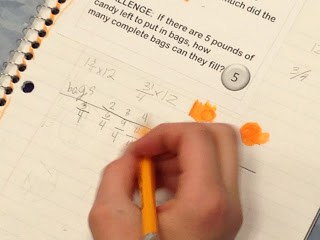 |
| This student was stumped! I spent some time talking with her and then found another student doing the same problem . . . |

